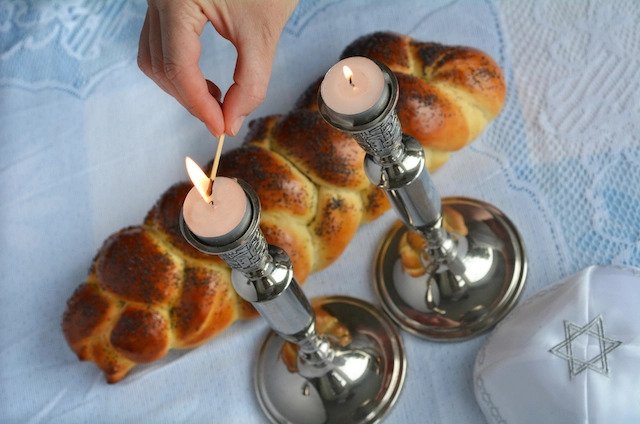The Sabbath (in Hebrew, , pronounced shah-BAHT–or in some communities, Shabbos, “SHAH-bis”) may be Judaism’s most distinctive and characteristic practice, as well as one of its most pervasive and long-lasting gifts to Western civilization.
A weekly 25-hour observance, from just before sundown each Friday through the completion of nightfall on Saturday, Shabbat is more than just a day off from labor. It is a day of physical and spiritual delights that is meant to illuminate certain key concepts in the traditional Jewish perception of the world.
Shabbat Themes and Theology
Shabbat is portrayed in the Bible as the pinnacle of the creation of the universe, and its observance can be seen as a reminder of the purposefulness of the world and the role of human beings in it. Shabbat also serves as a memorial to God‘s act of rescuing the Israelites from slavery in Egypt by setting aside a day for personal autonomy and freedom from the harsh demands of labor. The traditional Shabbat is portrayed in Jewish liturgy, song, and story as a day of joy, a sanctuary from travails, and even a foretaste of the perfected world that will someday be attained.
Shabbat History and Development
Shabbat, like many important facets of Judaism, has its origins in the Torah, where it is most notable as a day of complete cessation of labor. The prophetic tradition portrays it as a day of pleasures as well. The Rabbis spelled out their understanding of forbidden “labor” in a complex series of restrictions on productive activities of many sorts. They also prescribed festive meals and ceremonies for every part of the day. The varieties of Shabbat observances and customs over the ages and around the world illustrate the adaptation of Jews in many societies to new realities and modern ideas.

Help us keep Jewish knowledge accessible to millions of people around the world.
Your donation to My Jewish Learning fuels endless journeys of Jewish discovery. With your help, My Jewish Learning can continue to provide nonstop opportunities for learning, connection and growth.
Celebrating Shabbat At Home
One constant theme in Shabbat observance across time and territory is the centrality of home life with family members and guests. Preparation for Shabbat begins as early as mid-week in some households, and its arrival is marked by the spiritual illumination of a candle-lighting ceremony. Rabbinic tradition mandates three Shabbat meals, two begun with a special kiddush (“sanctification”) recited over wine. Family meals are occasions for singing, studying and celebrating together, as well as for consuming distinctive Shabbat foods.
Shabbat at Synagogue
Shabbat observance in the public sphere is focused on the synagogue, from the lively welcoming service, Kabbalat Shabbat, to the pensive farewell ceremony, Havdalah. The daily round of prayer services is augmented and endowed with a unique atmosphere. Special melodies and liturgy are used, and the familiar prayers are supplemented with passages in prose and poetry extolling God for the divine gift of the Shabbat and its delights. At the major worship service on Saturday morning, a portion of the Torah is read aloud as part of a year-long cycle, supplemented by a passage from one of the prophetic books (called a haftarah).
Sign up for My Jewish Learning’s RECHARGE, a weekly email with a collection of Shabbat readings and more to enhance your day of rest experience.




